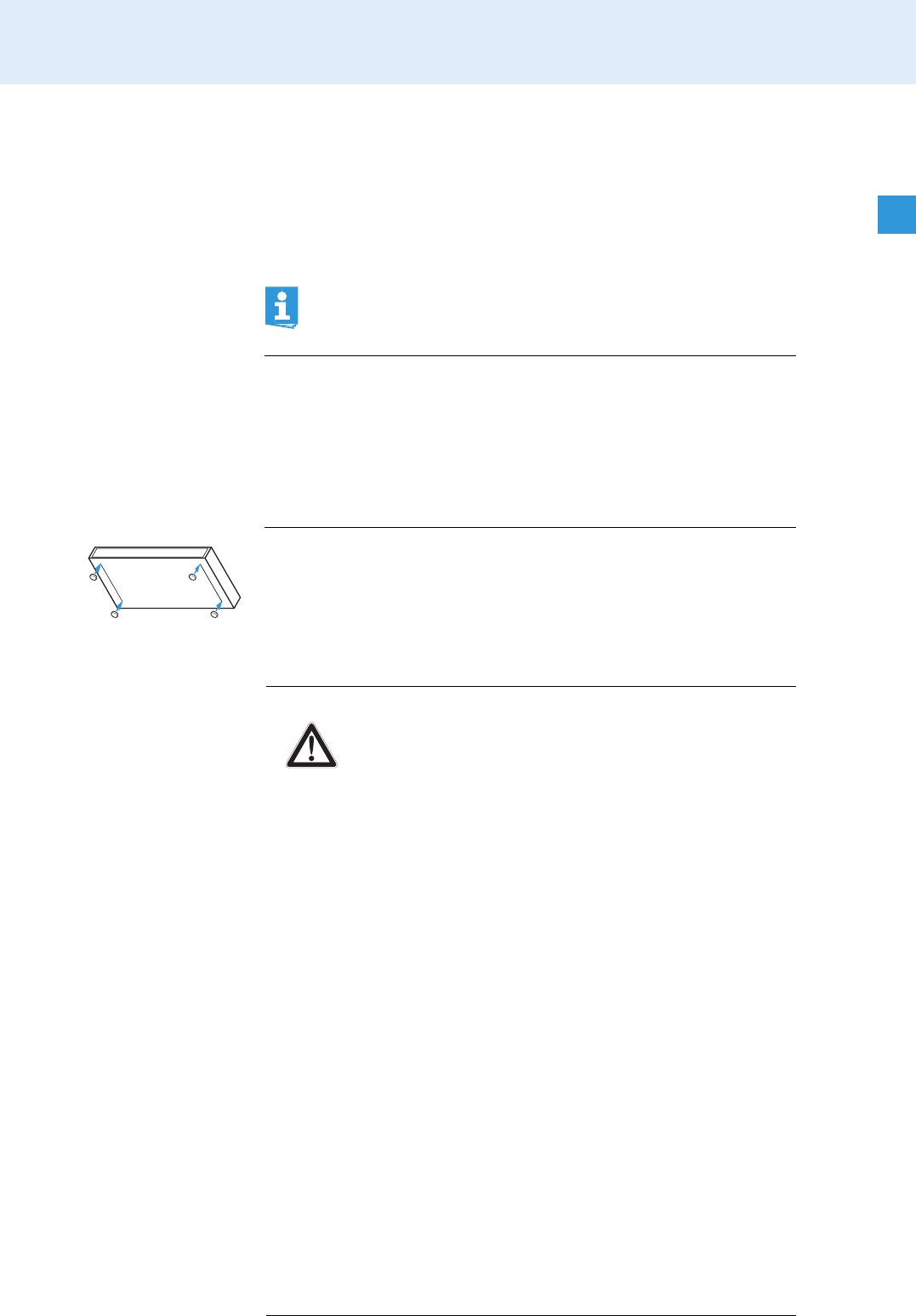
13
Putting the receiver into operation
Putting the receiver into operation
Fitting the device feet
To ensure that the receiver cannot slip on the surface on which it is placed,
four self-adhesive soft rubber feet are supplied.
̈ Ensure that the base of the receiver is clean and free from grease
before fitting the device feet.
̈ Fit the device feet to the four corners of the receiver as shown.
Rack mounting
Do not fit the device feet when rack mounting the receiver.
CAUTION! Risk of staining of furniture surfaces!
Some furniture surfaces have been treated with varnish,
polish or synthetics which might cause stains when they
come into contact with other synthetics. Despite a thorough
testing of the synthetics used by us, we cannot rule out the
possibility of staining.
̈ Do not place the receiver on delicate surfaces.
CAUTION! Risks when rack mounting the receiver!
When installing the receiver in a closed or multi-rack
assembly, please consider that, during operation, the
ambient temperature, the mechanical loading and the
electrical potentials will be different from those of devices
which are not mounted into a rack.
̈ The ambient temperature within the rack must not
exceed the temperature limit specified in the
specifications.
̈ When installing the receiver in a rack, take good care not
to affect the ventilation required for safe operation or
provide additional ventilation.
̈ Make sure the mechanical loading of the rack is even to
avoid a hazardous condition such as a severely
unbalanced rack.
̈ When connecting the receiver to the power supply,
observe the information indicated on the type plate.
Avoid circuit overloading. If necessary, provide
overcurrent protection.
̈ Ensure a reliable mains ground connection of the device
by taking appropriate measures – especially when you
are using an extension cable or a multi-outlet power strip.
̈ When installing the receiver in a closed or multi-rack
assembly, please note that intrinsically harmless leakage
currents of the individual devices may accumulate,
thereby exceeding the allowable limit value. As a remedy,
ground the rack via an additional ground connection.


















